Our partner, XM, lets you access a free demo account to apply your knowledge.
No hidden costs, no tricks.

Trading securities can be a complex process that requires fast decision-making skills, as well as sound technical knowledge, and a degree of familiarity with the markets. Whether you choose to trade stocks, cryptocurrencies, Forex, or whatever else, having a solid understanding of the fundamentals of trading is essential for your success.
Most traders begin their careers in the financial markets with limited theoretical knowledge of how the market works and what key factors to consider when buying and selling financial instruments. This is why most seasoned professionals advise beginners to stick with a couple of handy trading books to use as references whenever they feel uncertain about their abilities and knowledge.
A quality trading book gives traders the necessary knowledge to navigate the markets and consider the technical and fundamental indicators of each of their trades to limit risk and increase their chances of success. However, it must be noted that theoretical understanding alone cannot be a guarantee of success in the markets, as price movements are dictated by the actions taken by other players on the market, who can often react in unpredictable ways - shifting the prices along the way.
This investfox guide will present a brief overview of 10 books you can read to get a better understanding of financial markets and make more informed trading decisions in the future.
Before we delve into our choice of books you should read, it is important to consider what truly makes a trading book stand out from the rest and what it takes for one of these books to become a mainstay in your personal library for years to come:
Now that we have established the key points a good trading book should cover, we can move on to the list of 10 best trading books for novice traders.
Our list of the best trading books for novice traders is a collection of books that examine the different sides of trading, which includes strategies, technical indicators, fundamentals, market forces, etc.
Each of these books is written by seasoned professionals and includes a wide range of data and practical examples to help you make sense of the ever-changing market.

One of the most popular and frequently cited books on this list, The Intelligent Investor was written by British-born American economist and professor Benjamin Graham and is widely regarded as one of the most influential and important books on financial investments ever written.
Graham, who was a mentor to the “Oracle of Omaha” Warren Buffett, lays out a thorough approach to investing and market forces while focusing on the fundamental aspects of stock trading by highlighting the underlying value of a stock to determine its long-term potential.
While not specifically geared toward traders, The Intelligent Investor is a must-read for anyone considering entering the financial market in the future.
The book is also a valuable resource for those interested in the psychology of trading/investing, as it highlights the frequent mistakes made by market participants during periods of high volatility.

John C. Bogle, the founder of the Vanguard Group, which has steadily become one of the largest financial institutions in the world, is the author of another popular book on investing and trading.
The Little Book Of Common Sense Investing presents the reader with a simple core principle on which to structure their market activity - look for low-cost deals and invest for the long term.
The book is geared toward risk-averse players that engage in active trading but want to keep their losses at a minimum.
A great introduction to the financial markets, John C. Bogle’s book comes out on top of numerous lists of must-read trading and investing books.
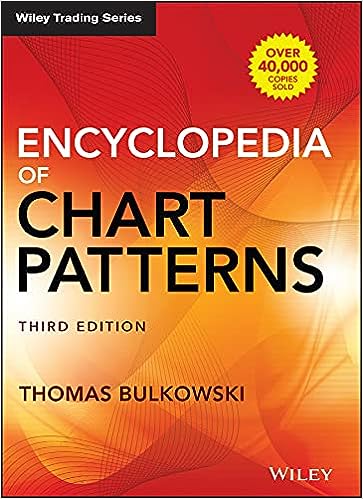
The Encyclopedia Of Chart Patterns by Thomas N. Bulkowski covers vital technical patterns from price charts and guides the reader through the process from reading singular candlesticks to more complex bullish and bearish reversal and continuation patterns.
Understanding chart patterns is a crucial part of technical analysis and of paramount importance to traders in any market.
The book covers a total of 33 chart patterns with thorough explanations and practical examples to boot.
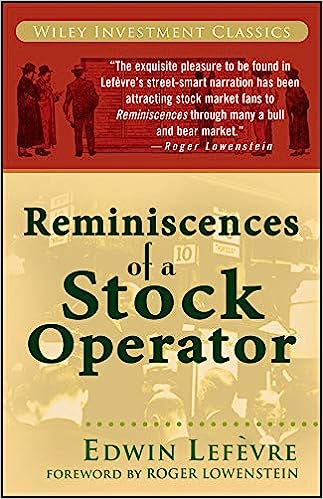
One of the older books on this list, Reminiscences of a Stock Operator was first published in 1923 and focuses on the psychological factors in trading. The book has garnered a lot of popularity among traders of various backgrounds, thanks to its witty delivery and engaging storytelling.
Reminiscences of a Stock Operator is widely considered a timeless classic among traders, with generations of financial professionals having read it during the early stages of their careers to familiarize themselves with the experience of a seasoned stock trader.
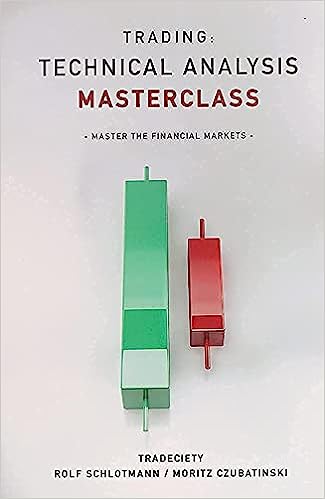
The Technical Analysis Masterclass is a book that lives up to its name and gives beginner traders a wide range of critical information regarding the trading of stocks, futures, currencies, options, etc.
The book focuses on aspects of technical analysis, such as chart patterns, volatility, and momentum, while highlighting the effects of trader psychology on the broader market.
The book is easily accessible for beginners and at less than 200 pages it is a quick read for anyone looking to familiarize themselves with the technical aspects of trading.
A welcome combination of technical building blocks, coupled with an insightful analysis of greed and fear among market participants gives readers a much-needed understanding of how markets are structured and what their core drivers are.

Andrew Aziz’s How To Day Trade for a Living is a seminal book regarding the topic of day trading - its origins, strategies, technical indicators, etc.
In the book, Andrew Aziz describes the fundamentals of day trading, how it is different from other approaches to trading, as well as the strategies and patterns that could lead to a successful trading career and ultimate financial autonomy.
The book covers some of the most important day-trading strategies, such as:
And many more. For each strategy, the author describes how to find the right stocks, what indicators to look for, when to enter the trade, when to exit, and where to place a stop-loss.
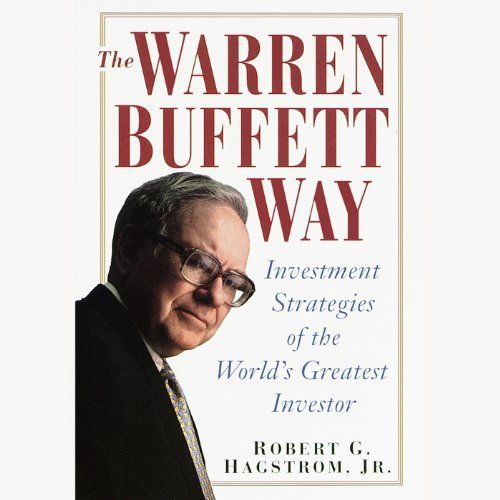
In his book The Warren Buffett Way, Robert G. Hagstrom describes the story and investing approach of legendary investor Warren Buffett.
Buffett’s philosophy is deeply rooted in Benjamin Graham’s value trading approach, which aims to identify undervalued stocks with plenty of room for growth and invest in them for the long term.
While not a trading book per se, The Warren Buffett Way greatly demystifies the process Warren Buffett has been using for decades in picking stocks and when to buy and sell.
The book follows the career of Warren Buffett and teaches readers how to build a market-beating portfolio using value investing.
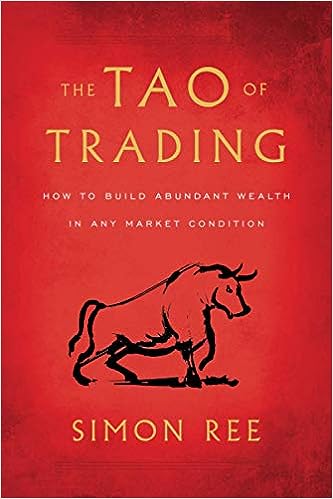
Simon Ree’s The Tao of Trading explores the fundamental factors that drive trading success and presents a roadmap of how to approach trading to get the most out of the process.
The author lays out a number of difficulties individual traders encounter on a daily basis and gives readers a comprehensive look at what makes some trading strategies stand out in terms of their returns.
The book aims to teach readers how to spot market trends as they form, how to generate consistent cash flows from the stock market, and how to build proven strategies that can guarantee the accumulation of wealth.

Market Wizards is a compilation of interviews with professional traders, conducted by author Jack D. Schwager. The book is a fascinating study of the mental fortitude of professional traders and lays out a simple formula for trading success - solid fundamental knowledge and proper mentality. The author compiles a set of guiding principles as an almanac for inexperienced traders to learn from.
Beginners can greatly benefit from the insight of seasoned professionals by considering their core principles and implementing them in their own trading strategies.
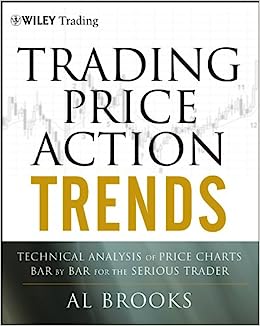
Author Al Brooks offers a systemic approach to trading by explaining his trading strategy and laying out its strengths and weaknesses.
Price Action Trends describes the information traders can gain from individual bars and chart patterns to find out what large institutions are doing on the market. The book serves as a guide to understanding the behaviors of major players to then mimic their trades and generate profits.
Trading Price Action Trends is a book for traders that are interested in the primary price action drivers on the market and would like to structure their trades in accordance with the sentiment of the largest market participants.
Our partner, XM, lets you access a free demo account to apply your knowledge.
No hidden costs, no tricks.
Some trading books offer a lot of value to beginner traders, as they give them basic knowledge of the markets, as well as technical and fundamental aspects of trading financial instruments.
The most popular trading books are often characterized by a beginner-friendly approach and plenty of real-life examples. Some of these books include: The Intelligent Investor, How To Day Trade For A Living, The Tao Of Trading, etc.
While some trading books may be beginner-friendly and easy to follow, others target seasoned professionals and can be exceedingly difficult for beginners to comprehend and follow. For this reason, it is important to match your experience level with the book on an individual basis.